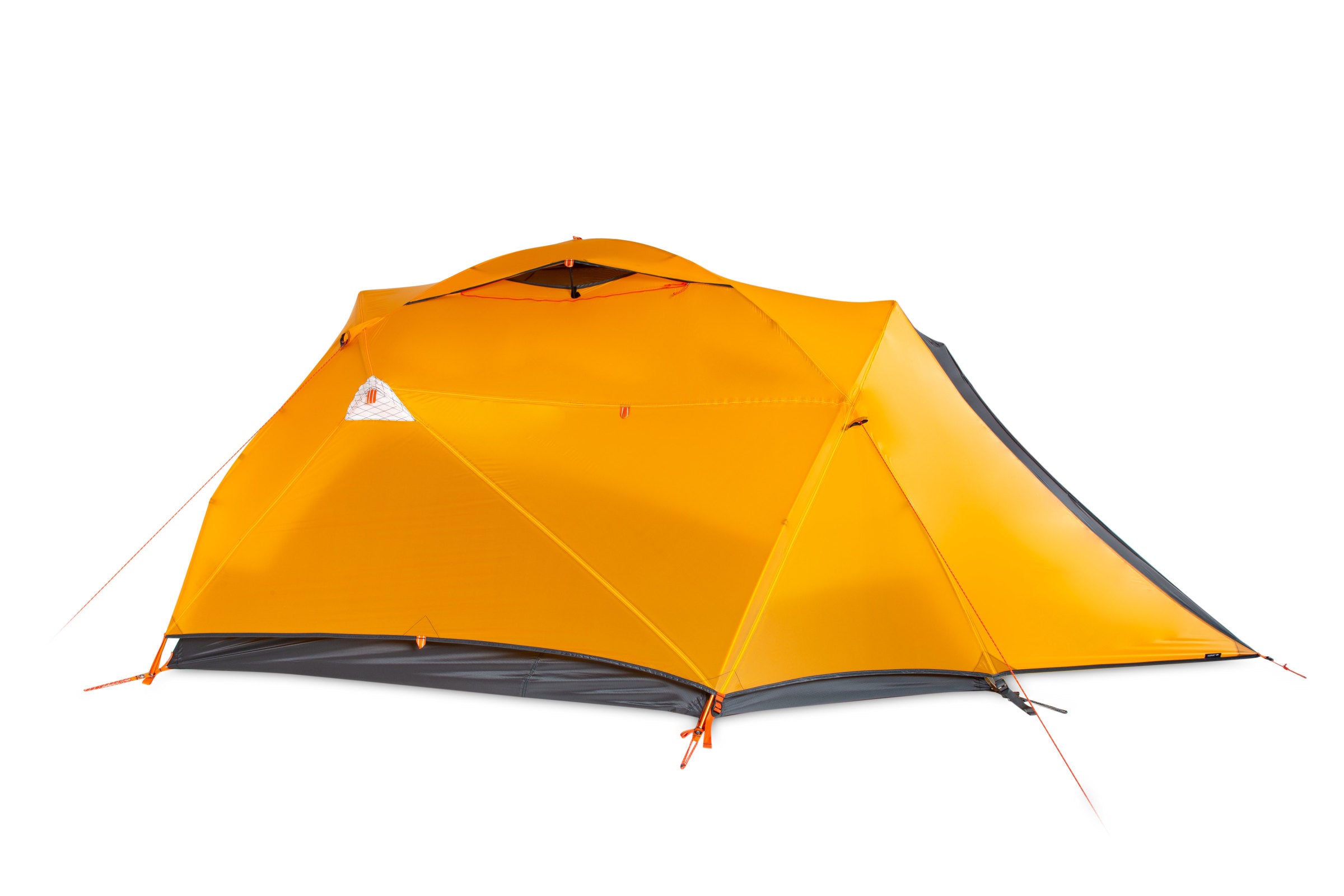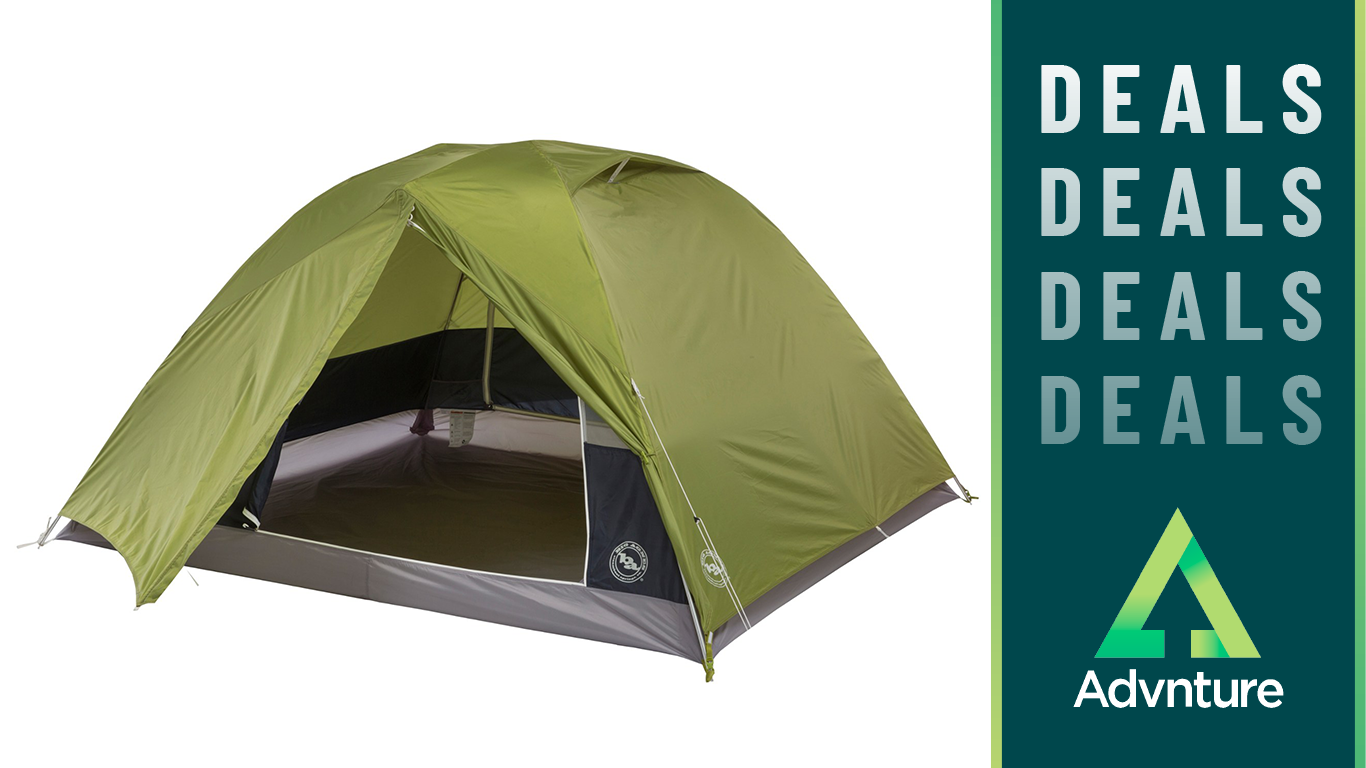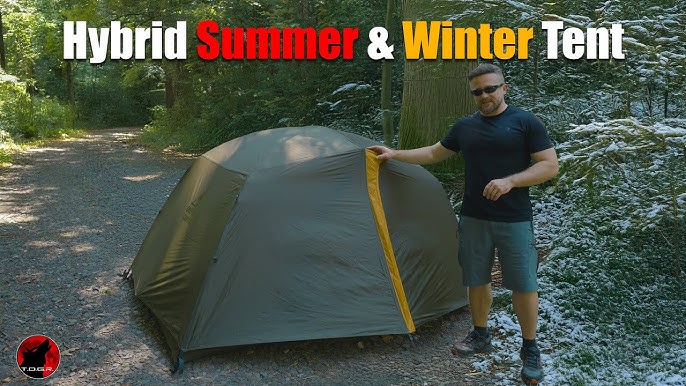Have you ever wondered if your trusty three-season tent can handle the challenges of four-season camping? You might be dreaming of snowy mountains and chilly nights but worry if your gear can keep up.
The truth is, not all tents are built the same, and using the wrong one could turn your adventure into a struggle. But don’t worry—this article will help you understand what it really takes to camp through all seasons, and whether your three-season tent can rise to the occasion.
Keep reading to discover the key differences and smart tips that could make your camping experience safe and comfortable, no matter the weather.

Credit: www.nemoequipment.com
Three Season Tent Features
Three season tents are made for spring, summer, and fall camping. They protect you from rain, wind, and bugs. These tents balance weight and durability well.
They are not made for heavy snow or very cold weather. Knowing their features helps you decide if you can camp all year round in one.
Design And Materials
Three season tents use lightweight materials to keep them easy to carry. They often have mesh panels for airflow and reduce weight. The fabric is water-resistant but not made for heavy snow.
- Light nylon or polyester fabric
- Water-resistant rain fly
- Strong but light poles made of aluminum or fiberglass
- Mesh walls for ventilation
Ventilation And Weather Protection
These tents have many mesh panels to keep air moving. This stops condensation inside the tent. They protect well from rain and light wind but not heavy storms or snow.
- Mesh windows and doors for airflow
- Rain fly covers the top and sides
- Sealed seams to block water
- Good wind resistance for most weather
Typical Use Cases
Three season tents are great for most camping trips except winter. They work well for backpacking, family camping, and festivals. They are not built for cold snow or ice camping.
- Spring, summer, and fall camping
- Backpacking trips
- Camping in mild rain and wind
- Not suitable for winter or heavy snow
Four Season Camping Demands
Camping in all four seasons means facing tough weather conditions. You need the right gear to stay safe and warm.
Using a three season tent for four season camping can be risky. It may not handle harsh weather well.
Weather Challenges
Four season camping means dealing with snow, strong winds, and heavy rain. These conditions can damage weak tents.
Three season tents are made for mild weather. They may not protect you during storms or cold nights.
- Snow load can collapse a weak tent
- High winds can tear thin fabric
- Rain can leak through less sealed seams
Insulation And Durability Needs
Four season tents use thick fabric and strong poles. This helps keep out cold air and hold up in storms.
Three season tents usually have lighter materials. They may not keep you warm or last in tough weather.
- Four season tents have better insulation
- Poles in four season tents are stronger
- Three season tents focus on ventilation
Safety Considerations
Using the wrong tent can put your safety at risk. Cold, wind, and snow can cause hypothermia or injury.
Four season tents provide better protection. They help keep you safe in extreme weather conditions.
- Four season tents prevent heat loss
- They reduce risk of tent collapse
- Strong fabrics block wind and snow
Using Three Season Tents In Winter
Three season tents are made for spring, summer, and fall. They keep you dry and protect from wind. Some people wonder if they can use these tents in winter.
Using a three season tent in winter can be risky. The tent may not handle snow or strong cold winds well. Still, with care, you can camp in cold weather.
Potential Risks
Three season tents are not made for heavy snow or ice. The poles might break under snow weight. The tent fabric may not keep out strong cold winds.
Cold weather can make the tent less stable. Snow can block air vents, causing moisture inside. This may lead to frost or dampness in the tent.
- Poles can snap under heavy snow
- Thin fabric may let cold wind in
- Snow buildup can block ventilation
- Moisture can cause frost inside tent
Modifications To Improve Performance
You can make some changes to help your three season tent work better in winter. Use extra poles or supports to hold snow weight. Add a footprint or tarp under the tent for insulation.
Seal any gaps with tape or fabric to stop cold air from entering. Clear snow off the tent often to avoid weight buildup. Make sure vents stay open for airflow.
- Add extra poles or supports for strength
- Use a footprint or tarp under the tent
- Seal gaps to block cold air
- Remove snow regularly from the tent
- Keep vents open for airflow
Best Practices For Cold Weather
Pick a good campsite that is sheltered from wind. Set up your tent on a flat, firm surface. Use a warm sleeping bag and sleeping pad to stay insulated from the cold ground.
Dress in layers and keep dry inside the tent. Ventilate the tent to reduce moisture. Check your tent often to clear snow and fix any damage quickly.
- Choose a sheltered, flat campsite
- Use warm sleeping gear for insulation
- Wear layers and stay dry inside tent
- Ventilate to reduce moisture inside
- Check tent often for snow or damage

Credit: hot-tent.com
Expert Tips For Extended Use
Camping in a three season tent during all four seasons can be challenging. You need to prepare well to stay safe and comfortable. This guide offers expert tips for using your tent beyond typical seasons.
Follow simple steps to improve warmth, protect your tent, and choose the best site. These tips help you get the most from your gear in tough weather.
Layering And Additional Gear
Adding layers and extra gear helps keep you warm and dry inside a three season tent. Use clothing and equipment to make up for the tent’s limits in cold weather.
Wear thermal base layers and waterproof outerwear. Use a four season sleeping bag and an insulated sleeping pad. Bring a tent footprint and a tarp for extra ground and rain protection.
- Thermal base layers trap body heat
- Waterproof jackets stop wind and rain
- Insulated sleeping pads reduce ground cold
- Tent footprints protect from moisture
- Tarps add a rain shield over the tent
Site Selection And Setup
Picking the right spot and setting up carefully can improve your tent’s performance in all seasons. Look for natural shelter and firm ground to keep the tent steady.
Clear snow or debris before pitching. Use guy lines and stakes to secure the tent tightly. Face the tent door away from the wind to reduce drafts.
- Choose a flat, sheltered area
- Clear snow and rocks before setup
- Use strong stakes and guy lines
- Point door away from prevailing wind
- Build a snow wall for extra windbreak
Maintenance And Care
Good care keeps your three season tent ready for all weather. Clean and dry your tent after each use. Check for damage and fix small tears quickly.
Store the tent in a dry place away from sunlight. Regular maintenance helps the fabric and zippers last longer in harsh conditions.
- Clean dirt and mud from tent fabric
- Dry tent completely before packing
- Repair holes and broken zippers fast
- Store tent in a cool, dry place
- Check seams for wear each season
Alternative Options For Cold Weather
Camping in cold weather needs special gear. A three season tent may not keep you warm enough.
There are ways to stay warm without buying a new four season tent. You can upgrade your gear or add extra equipment.
Upgrading To Four Season Tents
Four season tents are made for cold weather and snow. They have stronger poles and better fabrics.
These tents block wind and keep heat inside. They also have less mesh to stop cold air from coming in.
Hybrid Tent Choices
Hybrid tents mix features from three and four season tents. They offer some warmth and breathability.
These tents work well in mild cold weather. They are lighter than four season tents but warmer than three season ones.
- Stronger fabrics than three season tents
- Better wind resistance
- More mesh for ventilation
- Good for late fall or early spring camping
Supplementary Equipment
You can add gear to your three season tent to handle cold weather better. This gear adds warmth and protection.
Some useful items include insulated sleeping pads, tent heaters, and windbreaks. These help keep you warm without changing your tent.
- Insulated sleeping pads reduce heat loss
- Portable tent heaters add warmth inside
- Windbreaks block cold wind around your tent
- Tent footprint or tarp adds ground insulation

Credit: www.advnture.com
Frequently Asked Questions
Can You Camp In Winter With A Three Season Tent?
Yes, with proper preparation, you can use a three season tent in winter. Ensure you have extra insulation, a good sleeping bag, and a reliable heat source. Check the weather conditions and choose a sheltered campsite to protect against harsh winds and heavy snow.
What Modifications Make A Three Season Tent Winter-ready?
To winterize your tent, add a tarp for extra insulation and wind protection. Use a four-season sleeping bag and insulated sleeping pad. Reinforce the tent’s seams and zippers to prevent cold air leaks. Always ensure proper ventilation to avoid condensation inside the tent.
How Does A Three Season Tent Differ From A Four Season Tent?
A three season tent is lighter and designed for spring, summer, and fall. It typically has more mesh for ventilation. A four season tent is sturdier, with stronger poles and less mesh, designed to withstand snow and harsh winds during winter camping.
What Risks Exist When Winter Camping In A Three Season Tent?
The main risks are inadequate insulation, potential for condensation, and tent collapse under heavy snow. Always check weather forecasts and prepare for sudden changes. Use additional gear like tarps and windbreaks to reinforce your setup and stay safe in extreme conditions.
Conclusion
Camping in a three-season tent during all four seasons has its limits. Cold weather and strong winds need better protection. You might stay warm in mild winter but risk discomfort in harsh conditions. Choose your gear carefully and know your tent’s strength.
Stay safe and enjoy camping year-round with smart planning.

